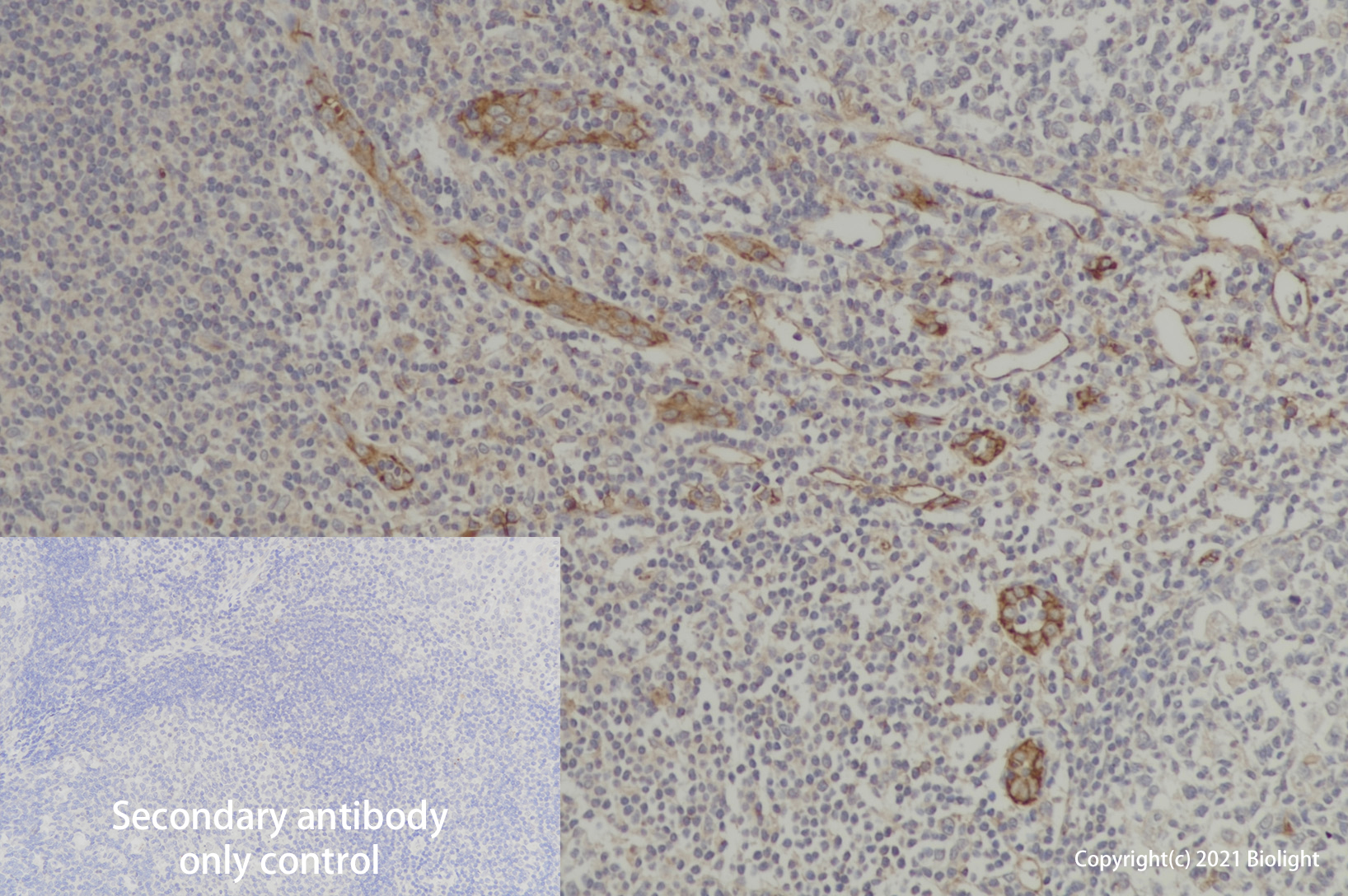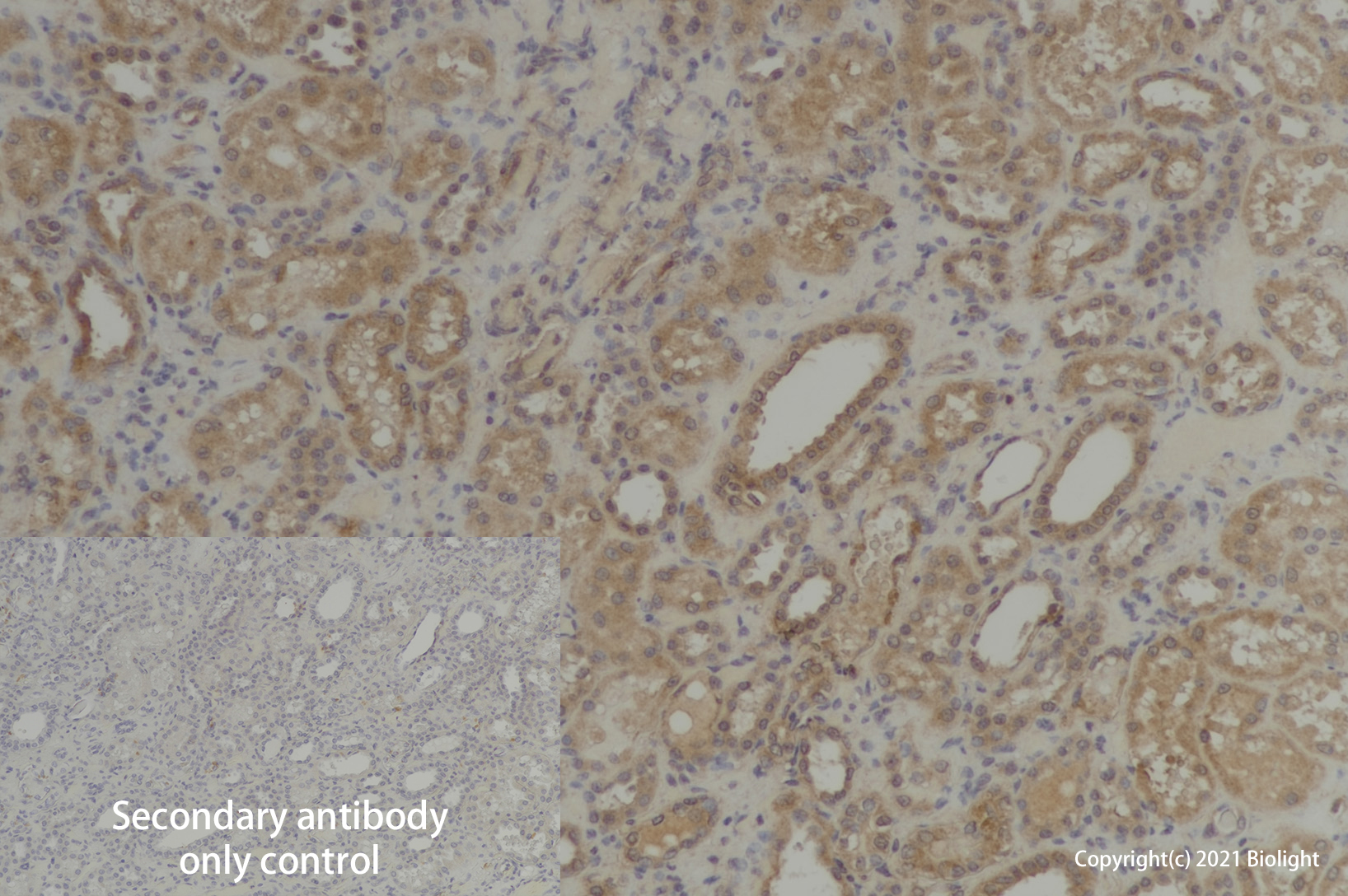
Anti-PECAM1 Antibody, Rabbit Polyclonal
產(chǎn)品編號(hào):PA00048HuA10
$ 詢價(jià)
規(guī)格 50uL 100uL 200uL
|
產(chǎn)品名稱:Anti-PECAM1 Antibody, Rabbit Polyclonal
經(jīng)驗(yàn)證的應(yīng)用:WB/IHC
交叉反應(yīng):Human
特異性:human PECAM1
免疫原:Recombinant human PECAM1 protein, fragment Asp199~Lys287; UniprotKB: P16284
制備方法:Produced in rabbits immunized with human PECAM1, and purified by antigen affinity chromatography.
來(lái)源:Polyclonal Rabbit IgG
純化:Immunogen affinity purified
緩沖液:Supplied in PBS, 50% glycerol and less than 0.02% sodium azide, PH7.4
偶聯(lián)物:Unconjugated
狀態(tài):Liquid
運(yùn)輸方式:This antibody is shipped as liquid solution at ambient temperature. Upon receipt, store it immediately at the temperature recommended.
儲(chǔ)存條件:This antibody can be stored at 2℃-8℃ for one month without detectable loss of activity. Antibody products are stable for twelve months from date of receipt when stored at -20℃ to -80℃. Preservative-Free. Avoid repeated freeze-thaw cycles.
圖片:
Figure1.Application in WB
Western blot analysis of extracts of various cell lines using PECAM1 antibody (PA00048HuA10) at 1 μg/mL. Lysates/proteins: 25 μg per lane. Blocking buffer: 10% nonfat dry milk in TBST. Detection: ECL Basic Kit. Exposure time: 1s.
Figure2.Application in IHC
Immunohistochemistry (Formalin/PFA-fixed paraffin-embedded sections) analysis of human tonsil sections labelling PECAM1 with purified PA00048HuA10 at 10 μg/ml. Heat mediated antigen retrieval was performed using citrate buffer (pH 6.0). Tissue was polymer used counterstained with Hematoxylin. Rabbit specific IHC polymer detection kit HRP/DAB secondary antibody was used at 1/4000 dilution. PBS instead of the primary antibody was used as the negative control.
Figure3.Application in IHC
別稱:CD31, EndoCAM, GPIIA', PECA1
背景信息:CD31/PECAM-1. CD31, also known as platelet endothelial cell adhesion molecule-1 (PECAM-1), is a 130 kDa heavily glycosylated transmembrane protein belonging to the immunoglobulin (Ig) superfamily of cell adhesion molecules (1, 2). CD31 is highly expressed on endothelial cells and at a lower level on platelets, granulocytes, macrophages, dendritic cells, T and B cells, and natural killer (NK) cells. It is involved in cell adhesion and is required for transepithelial migration of leukocytes (TEM) (3, 4). CD31 is composed of an extracellular domain (ECD) of 574 amino acids (aa) containing six Ig-like domains, a transmembrane domain, and a 118 aa cytoplasmic domain (5). The latter undergoes alternative splicing which generates multiple isoforms showing altered adhesive properties compared to full length CD31 (6). The human CD31 ECD shares 63% and 61% aa sequence identity with mouse and rat CD31, respectively. CD31 acts as a homophilic receptor through its extracellular domain and is involved in downstream signaling via its cytoplasmic domain (7). This domain contains highly conserved ITIM motifs which, once tyrosine phosphorylated, recruit and activate the signaling molecules Src and SHP-2 (1, 8). The resulting inhibition of TCR signaling increases the activation threshold of T cells, thus reinforcing peripheral tolerance and preventing development of autoimmunity (9). CD31 additionally regulates immune responses by acting as a key inhibitory receptor in dendritic cell development (10). Besides its role in TEM, CD31 appears to regulate T cell trafficking through a complex coordination of endothelial cell junctions and T cell extravasation (11). In vitro, a 110 kDa soluble form of CD31 is released following shedding of the extracellular domain during endothelial cell apoptosis (12). This ectodomain has also been identified in the serum of patients suffering from myocardial infarction, acute ischaemic stroke, and multiple sclerosis, conditions that involve tissue damage and endothelial cell apoptosis (13-15).
全稱:Platelet endothelial cell adhesion molecule (PECAM1)




